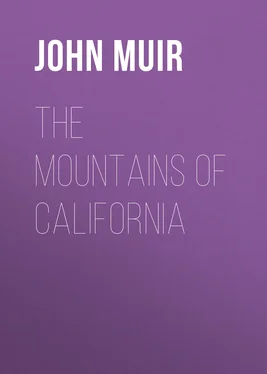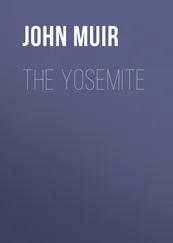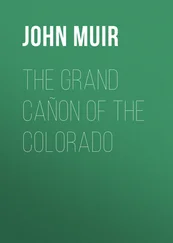John Muir - The Mountains of California
Здесь есть возможность читать онлайн «John Muir - The Mountains of California» — ознакомительный отрывок электронной книги совершенно бесплатно, а после прочтения отрывка купить полную версию. В некоторых случаях можно слушать аудио, скачать через торрент в формате fb2 и присутствует краткое содержание. Жанр: Путешествия и география, История, foreign_edu, foreign_antique, foreign_prose, на английском языке. Описание произведения, (предисловие) а так же отзывы посетителей доступны на портале библиотеки ЛибКат.
- Название:The Mountains of California
- Автор:
- Жанр:
- Год:неизвестен
- ISBN:нет данных
- Рейтинг книги:4 / 5. Голосов: 1
-
Избранное:Добавить в избранное
- Отзывы:
-
Ваша оценка:
- 80
- 1
- 2
- 3
- 4
- 5
The Mountains of California: краткое содержание, описание и аннотация
Предлагаем к чтению аннотацию, описание, краткое содержание или предисловие (зависит от того, что написал сам автор книги «The Mountains of California»). Если вы не нашли необходимую информацию о книге — напишите в комментариях, мы постараемся отыскать её.
The Mountains of California — читать онлайн ознакомительный отрывок
Ниже представлен текст книги, разбитый по страницам. Система сохранения места последней прочитанной страницы, позволяет с удобством читать онлайн бесплатно книгу «The Mountains of California», без необходимости каждый раз заново искать на чём Вы остановились. Поставьте закладку, и сможете в любой момент перейти на страницу, на которой закончили чтение.
Интервал:
Закладка:
One of the most striking effects of the snow on the mountains is the burial of the rivers and small lakes.
As the snow fa's in the river
A moment white, then lost forever,
sang Burns, in illustrating the fleeting character of human pleasure. The first snowflakes that fall into the Sierra rivers vanish thus suddenly; but in great storms, when the temperature is low, the abundance of the snow at length chills the water nearly to the freezing-point, and then, of course, it ceases to melt and consume the snow so suddenly. The falling flakes and crystals form, cloud-like masses of blue sludge, which are swept forward with the current and carried down to warmer climates many miles distant, while some are lodged against logs and rocks and projecting points of the banks, and last for days, piled high above the level of the water, and show white again, instead of being at once "lost forever," while the rivers themselves are at length lost for months during the snowy period. The snow is first built out from the banks in bossy, over-curling drifts, compacting and cementing until the streams are spanned. They then flow in the dark beneath a continuous covering across the snowy zone, which is about thirty miles wide. All the Sierra rivers and their tributaries in these high regions are thus lost every winter, as if another glacial period had come on. Not a drop of running water is to be seen excepting at a few points where large falls occur, though the rush and rumble of the heavier currents may still be heard. Toward spring, when the weather is warm during the day and frosty at night, repeated thawing and freezing and new layers of snow render the bridging-masses dense and firm, so that one may safely walk across the streams, or even lead a horse across them without danger of falling through. In June the thinnest parts of the winter ceiling, and those most exposed to sunshine, begin to give way, forming dark, rugged-edged, pit-like sinks, at the bottom of which the rushing water may be seen. At the end of June only here and there may the mountaineer find a secure snow-bridge. The most lasting of the winter bridges, thawing from below as well as from above, because of warm currents of air passing through the tunnels, are strikingly arched and sculptured; and by the occasional freezing of the oozing, dripping water of the ceiling they become brightly and picturesquely icy. In some of the reaches, where there is a free margin, we may walk through them. Small skylights appearing here and there, these tunnels are not very dark. The roaring river fills all the arching way with impressively loud reverberating music, which is sweetened at times by the ouzel, a bird that is not afraid to go wherever a stream may go, and to sing wherever a stream sings.
All the small alpine pools and lakelets are in like manner obliterated from the winter landscapes, either by being first frozen and then covered by snow, or by being filled in by avalanches. The first avalanche of the season shot into a lake basin may perhaps find the surface frozen. Then there is a grand crashing of breaking ice and dashing of waves mingled with the low, deep booming of the avalanche. Detached masses of the invading snow, mixed with fragments of ice, drift about in sludgy, island-like heaps, while the main body of it forms a talus with its base wholly or in part resting on the bottom of the basin, as controlled by its depth and the size of the avalanche. The next avalanche, of course, encroaches still farther, and so on with each in succession until the entire basin may be filled and its water sponged up or displaced. This huge mass of sludge, more or less mixed with sand, stones, and perhaps timber, is frozen to a considerable depth, and much sun-heat is required to thaw it. Some of these unfortunate lakelets are not clear of ice and snow until near the end of summer. Others are never quite free, opening only on the side opposite the entrance of the avalanches. Some show only a narrow crescent of water lying between the shore and sheer bluffs of icy compacted snow, masses of which breaking off float in front like icebergs in a miniature Arctic Ocean, while the avalanche heaps leaning back against the mountains look like small glaciers. The frontal cliffs are in some instances quite picturesque, and with the berg-dotted waters in front of them lighted with sunshine are exceedingly beautiful. It often happens that while one side of a lake basin is hopelessly snow-buried and frozen, the other, enjoying sunshine, is adorned with beautiful flower-gardens. Some of the smaller lakes are extinguished in an instant by a heavy avalanche either of rocks or snow. The rolling, sliding, ponderous mass entering on one side sweeps across the bottom and up the opposite side, displacing the water and even scraping the basin clean, and shoving the accumulated rocks and sediments up the farther bank and taking full possession. The dislodged water is in part absorbed, but most of it is sent around the front of the avalanche and down the channel of the outlet, roaring and hurrying as if frightened and glad to escape.
The most magnificent storm phenomenon I ever saw, surpassing in showy grandeur the most imposing effects of clouds, floods, or avalanches, was the peaks of the High Sierra, back of Yosemite Valley, decorated with snow-banners. Many of the starry snow-flowers, out of which these banners are made, fall before they are ripe, while most of those that do attain perfect development as six-rayed crystals glint and chafe against one another in their fall through the frosty air, and are broken into fragments. This dry fragmentary snow is still further prepared for the formation of banners by the action of the wind. For, instead of finding rest at once, like the snow which falls into the tranquil depths of the forests, it is rolled over and over, beaten against rock-ridges, and swirled in pits and hollows, like boulders, pebbles, and sand in the pot-holes of a river, until finally the delicate angles of the crystals are worn off, and the whole mass is reduced to dust. And whenever storm-winds find this prepared snow-dust in a loose condition on exposed slopes, where there is a free upward sweep to leeward, it is tossed back into the sky, and borne onward from peak to peak in the form of banners or cloudy drifts, according to the velocity of the wind and the conformation of the slopes up or around which it is driven. While thus flying through the air, a small portion makes good its escape, and remains in the sky as vapor. But far the greater part, after being driven into the sky again and again, is at length locked fast in bossy drifts, or in the wombs of glaciers, some of it to remain silent and rigid for centuries before it is finally melted and sent singing down the mountainsides to the sea.
Yet, notwithstanding the abundance of winter snow-dust in the mountains, and the frequency of high winds, and the length of time the dust remains loose and exposed to their action, the occurrence of well-formed banners is, for causes we shall hereafter note, comparatively rare. I have seen only one display of this kind that seemed in every way perfect. This was in the winter of 1873, when the snow-laden summits were swept by a wild "norther." I happened at the time to be wintering in Yosemite Valley, that sublime Sierra temple where every day one may see the grandest sights. Yet even here the wild gala-day of the north wind seemed surpassingly glorious. I was awakened in the morning by the rocking of my cabin and the beating of pine-burs on the roof. Detached torrents and avalanches from the main wind-flood overhead were rushing wildly down the narrow side cañons, and over the precipitous walls, with loud resounding roar, rousing the pines to enthusiastic action, and making the whole valley vibrate as though it were an instrument being played.
Читать дальшеИнтервал:
Закладка:
Похожие книги на «The Mountains of California»
Представляем Вашему вниманию похожие книги на «The Mountains of California» списком для выбора. Мы отобрали схожую по названию и смыслу литературу в надежде предоставить читателям больше вариантов отыскать новые, интересные, ещё непрочитанные произведения.
Обсуждение, отзывы о книге «The Mountains of California» и просто собственные мнения читателей. Оставьте ваши комментарии, напишите, что Вы думаете о произведении, его смысле или главных героях. Укажите что конкретно понравилось, а что нет, и почему Вы так считаете.












